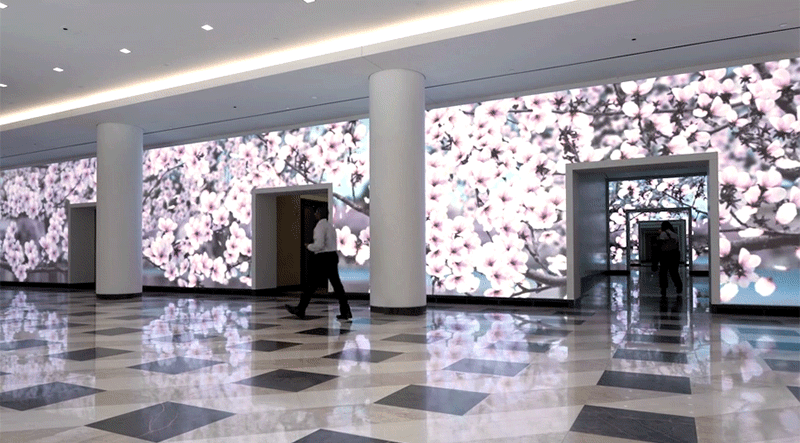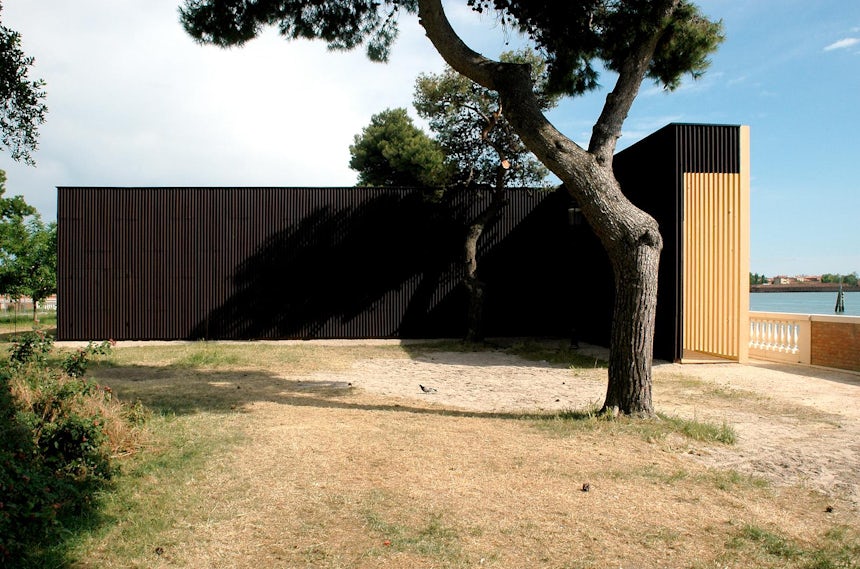If it seems like these wall images are following your every move, that’s because they are — in a way. As part of a complete lobby overhaul inside Washington, D.C.’s landmark Terrell Place, stunning motion-activated displays feature ever-changing feasts for the eyes ranging from petals blowing off of the city’s iconic cherry trees to seas of colorful, morphing threads.

“We started off knowing only that we were going to do a media installation,” says Michael Schneider, senior creative technology designer at ESI Design, the firm behind this lobby renovation. “After spending time in the lobby, we keyed into the way that people moved between the different corridors and decided that the ebb and flow of people and time had the right rhythm for the space.”

Covering a total surface area of 1,700 square feet, the interactive artwork can be set to one of three modes that offer up different visual reactions to the viewer: Seasons showcases D.C.’s cherry trees in any of the four seasons and depicts gentle winds that shake branches and create flurries of petals as a body is detected. Color Play presents algorithmically generated patterns of multicolor threads that move and expand when interacting with the viewer, resembling bursts of Fourth of July fireworks. And City Scape highlights D.C.’s iconic statuary, architecture and transportation scenery, all of which shuffle, saturate, open up or animate when approached.

Adding even more excitement to the experience, all of the scenes adapt as the day goes on to correspond with day-into-night transition, and audio by sound artist Bruce Odland not only accompanies the displays, but also reacts to viewer movement, as well.
To achieve these marvels, the project team utilized a combination of both powerful and standard software including TouchDesigner (which did the dynamic composting, particle systems and other visual manipulation), After Effects, Unity, Maya and Nuke. OpenCV was then used to add a sensor-tracking program that communicates between 14 thermal imaging cameras by FLIR Systems and the generative video and audio machines.

The nine displays themselves — the largest of which is 80 feet wide by 13 feet high — comprise Planar’s Clarity Matrix LCD and Advantage LED Solutions’ LED video walls screened by Gerriets International’s diffusion fabric. Meanwhile, the installation’s 26 audio components include Clark Synthesis audio transducers concealed in walls, solid drive transducers mounted to the ceiling and four Tannoy speakers also in the ceiling that produce nondirectional sound.
“The reactive and generative wall offers a key advantage: Tenants who walk by every day are always presented with a slightly different scene,” says Schneider. “They’re offered a level of ownership of the wall by discovering how it responds to them.”




